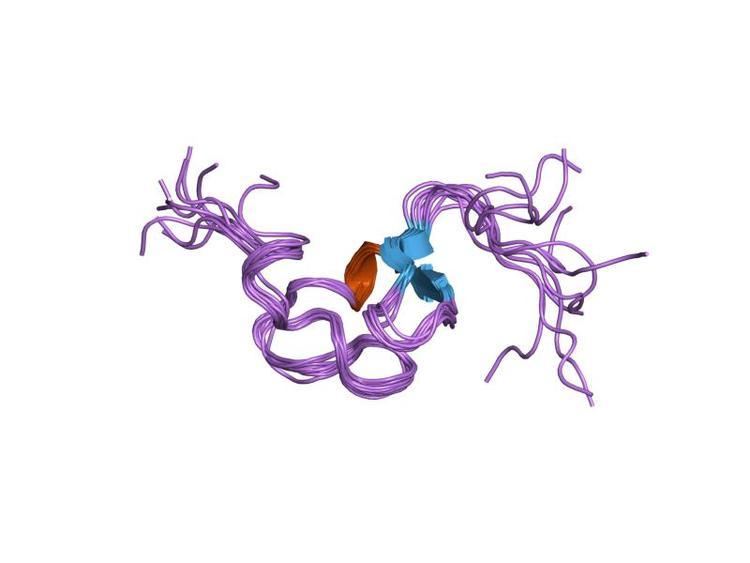Symbol Ldl_recept_a InterPro IPR002172 PROSITE PS50068 | Pfam PF00057 SMART SM00192 SCOP 1ldl | |
 | ||
The low-density lipoprotein receptor gene family codes for a class of structurally related cell surface receptors that fulfill diverse biological functions in different organs, tissues, and cell types. The role that is most commonly associated with this evolutionarily ancient family is cholesterol homeostasis (maintenance of appropriate concentration of cholesterol). In humans, excess cholesterol in the blood is captured by low-density lipoprotein (LDL) and removed by the liver via endocytosis of the LDL receptor. Recent evidence indicates that the members of the LDL receptor gene family are active in the cell signalling pathways between specialized cells in many, if not all, multicellular organisms.
Contents
There are seven members of the LDLR family in mammals, namely:
Human proteins containing this domain
Listed below are human proteins containing low-density lipoprotein receptor domains:
Class A
C6; C7; 8A; 8B; C9; CD320; CFI; CORIN; DGCR2; HSPG2; LDLR; LDLRAD2; LDLRAD3; LRP1; LRP10; LRP11; LRP12; LRP1B; LRP2; LRP3; LRP4; LRP5; LRP6; LRP8; MAMDC4; MFRP; PRSS7; RXFP1; RXFP2; SORL1; SPINT1; SSPO; ST14; TMPRSS4; TMPRSS6; TMPRSS7; TMPRSS9 (serase-1B); VLDLR;
Class B
EGF; LDLR; LRP1; LRP10; LRP1B; LRP2; LRP4; LRP5; LRP5L; LRP6; LRP8; NID1; NID2; SORL1; VLDLR;
Structure
The members of the LDLR family are characterized by distinct functional domains present in characteristic numbers. These modules are:
In addition to these domains which can be found in all receptors of the gene family, LDL receptor and certain isoforms of ApoER2 and VLDLR contain a short region which can undergo O-linked glycosylation, known as O-linked sugar domain. ApoER2 moreover, can harbour a cleavage site for the protease furin between type A and type B repeats which enables production of a soluble receptor fragment by furin-mediated processing.
